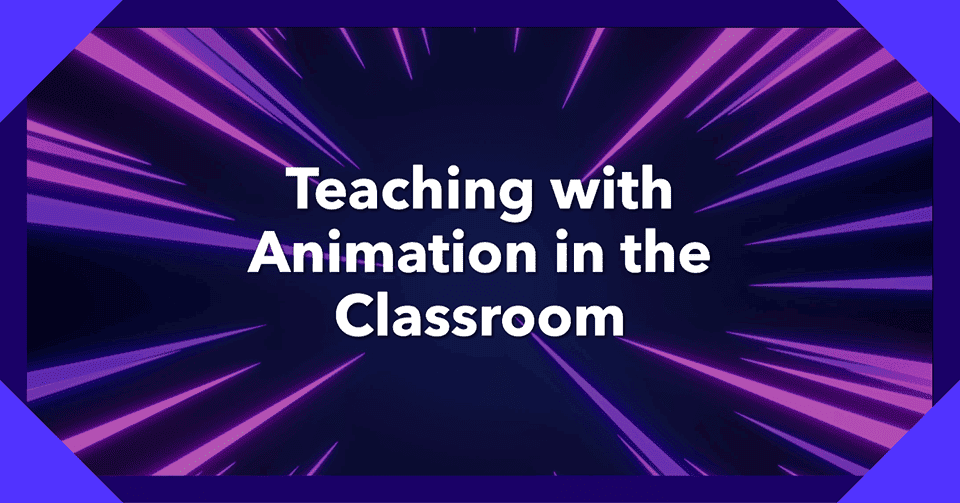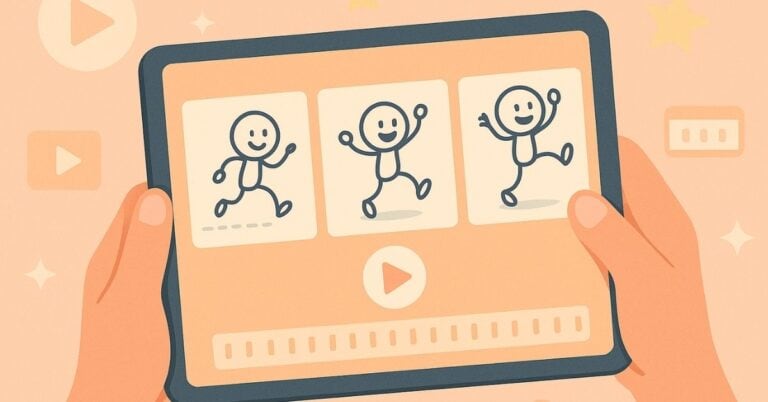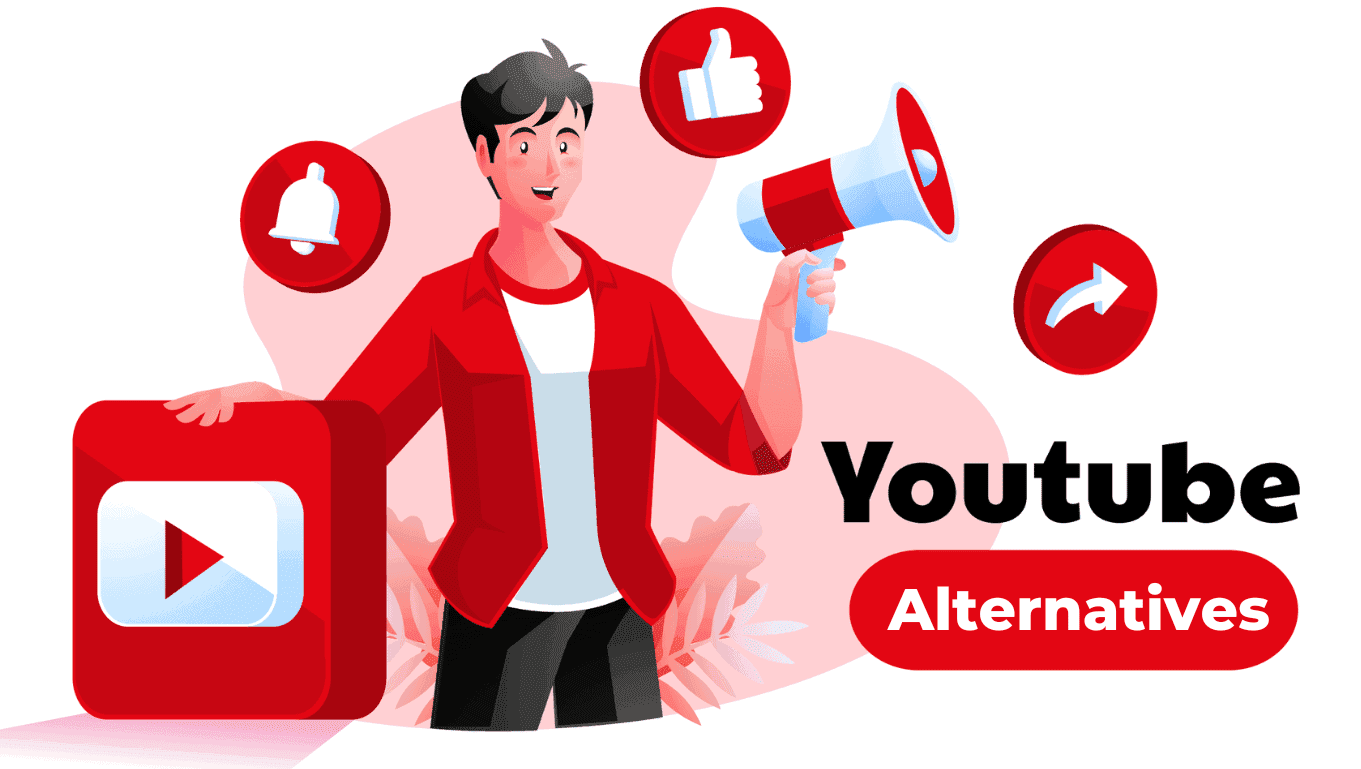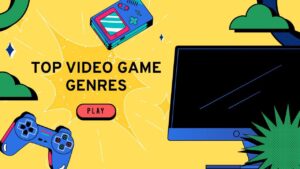Table of Contents
- Introduction: The Power of Animation in Education
- II. Understanding Animation in Education
- III. The Impact of Cartoon Animation on Learning
- IV. 15 Reasons to Use Animation in the Classroom
- A. Enhances Student Engagement
- B. Simplifies Complex Concepts
- C. Facilitates Better Retention
- D. Encourages Creativity
- E. Suits Different Learning Styles
- F. Increases Motivation
- G. Provides Interactive Learning Experiences
- H. Improves Communication
- I. Supports Distance Learning
- J. Promotes Collaboration
- K. Creates a Fun Learning Environment
- L. Enhances Digital Literacy
- M. Supports Differentiated Instruction
- N. Enables Self-Paced Learning
- O. Improves Outcomes for Students with Learning Difficulties
- V. Practical Examples of Animation in Education
- VI. Tips for Integrating Animation into Classroom Teaching
- FAQs
- VII. Conclusion
Introduction: The Power of Animation in Education
Are you wondering if teaching with animation in the classroom can boost the learning experience?
The digital era has revolutionized traditional teaching methods, bringing forth innovative approaches that enhance the learning experience. One such approach that is steadily gaining recognition and acclaim is the use of animation in the classroom.
Today, using animation in education is no longer a novel concept but an integral part of contemporary practices. From elementary schools to higher education institutions, educators worldwide are harnessing the power of animation to animate the classroom environment, making it more interactive, engaging, and fun.
But why exactly is the use of animation in teaching such a game-changer in the education sector? And how does it enhance students’ learning experiences? This article delves into these questions, providing 15 compelling reasons why every educator should consider incorporating animated video content in education.
Whether you’re an educator looking for innovative ways to teach & engage learners or a curious reader interested in the transformation of modern education, this comprehensive guide will provide you with valuable insights into the power and potential of using animation in the education system.
So let’s dive in and explore how animation can revolutionize the learning process and reshape education as we know it.
II. Understanding Animation in Education
Before we delve into the myriad reasons why teaching with animation in the classroom boosts the learning experience, let’s take a moment to comprehend the concept of animation in education.
A. Definition and Types of Educational Animation
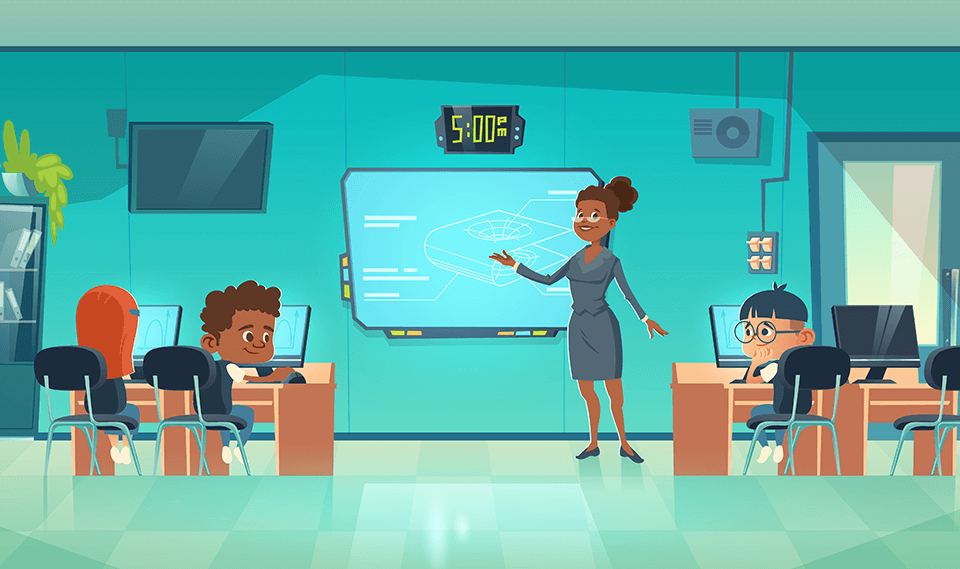
Animation is a dynamic medium in which images or objects are manipulated to appear as moving. In the context of education, it is a powerful tool that facilitates the transformation of complex concepts into easy-to-digest visual content, making it an excellent aid for learners. The use of animation in education is versatile, with various types tailored to serve different learning objectives.
1. Explanatory Animation:
Primarily used to illustrate complex concepts or processes, such as the water cycle or a mathematical equation. They simplify complicated processes, making them more comprehensible.
2. Storytelling Animation:
Utilizes animated characters and scenarios to narrate stories, often used in literature, social studies, or lessons.
3. Whiteboard Animation:
Features hand-drawn illustrations on a whiteboard, with narration synchronizing with the images.
4. Stop Motion Animation:
A method where objects are physically manipulated in small increments between individually photographed frames so they will appear to exhibit independent motion when the series of frames is played as a fast sequence.
For this animation style, you can use your Android or iOS devices for it.
B. Brief History of Animation in Education
Animation has been an integral part of education for a long time, with the first uses dating back to the mid-20th century. The animated television series “Schoolhouse Rock!” was a pioneer, utilizing catchy tunes and animation to teach grammar, math, and history.
As the internet and technology evolved, so did the use of animation in education. It shifted from TV screens to computer screens, reaching students through educational software, websites, and apps.
C. Current Trends in Teaching with Animation
Today, animation is an essential component of educational technology. From interactive lessons on platforms like Khan Academy to educational videos on YouTube, animation is ubiquitous in digital learning and eLearning platforms.
It’s not just confined to remote learning; classrooms utilize projectors and smartboards to share animated content, enhancing lesson plans and learning experiences.
Moreover, the advent of user-friendly animation software has enabled students to become creators. This shift promotes critical thinking and problem-solving skills as students strategize, storyboard, and animate their projects.
III. The Impact of Cartoon Animation on Learning
The impact of teaching with animation in the classroom extends beyond making lessons more engaging. It significantly enhances comprehension, caters to various learning styles, and has been backed by multiple studies.
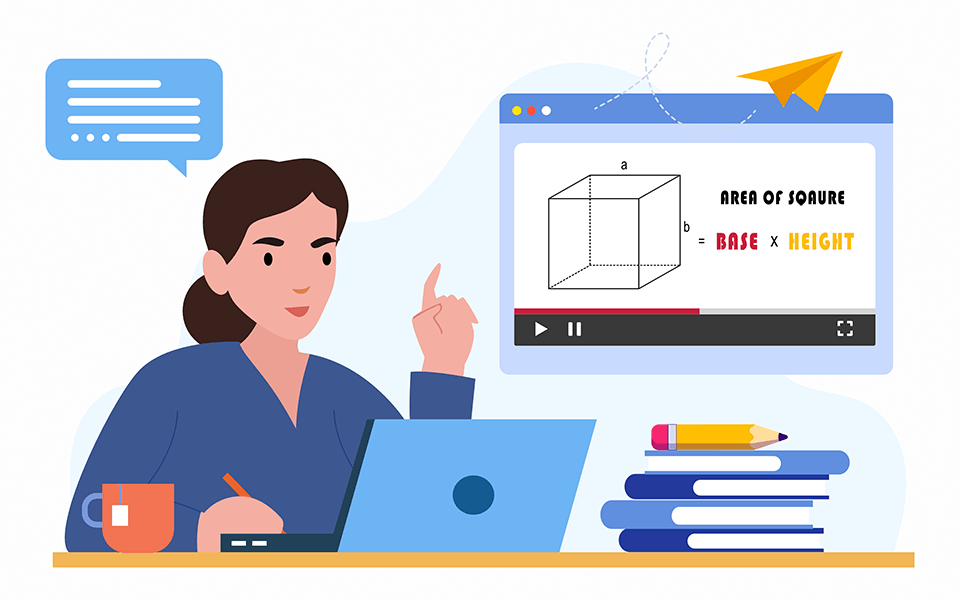
A. How Animation Aids Comprehension
Animation simplifies the learning process. It can turn abstract or complex concepts difficult to explain into concrete visuals, making them easier to grasp.
For instance, an animated video can illustrate a historical event in a way that a textbook never could. It can also demonstrate a complicated process in a short space of time, like cell division or photosynthesis.
Moreover, animation facilitates digital storytelling, which is a great way to improve literacy & critical thinking skills. Animated characters and scenarios bring stories to life, making them more relatable and memorable for learners.
This visual and auditory method of storytelling can help children learn better and remember key ideas.
B. Use of Animation for Different Learning Styles
Not all students learn the same way. Some are visual learners who comprehend information better when they see it.
Others are auditory learners who benefit more from listening. Animation caters to both these learning styles, making it a versatile tool in the classroom.
Additionally, stop-motion animation projects can serve as a multi-sensory learning experience.
Students can manipulate physical objects, like clay or puppets, to create animations, catering to kinesthetic learners who learn best by doing.
C. Studies Supporting the Effectiveness of Animation in the Classroom
Numerous studies have been conducted to evaluate the effectiveness of animation in education. A study by Lin and Atkinson (2011) suggested that animations could significantly improve students’ understanding of complex spatial-temporal relations.
Another research by Mayer and Moreno (2002) found that students who learned with animations and narrations performed better than students who learned with text alone.
Additionally, a 2007 study by Wouters, Paas, and van Merriënboer emphasized the role of animation in reducing cognitive load, thereby improving learning outcomes. They suggested that animations, particularly interactive ones, could be beneficial for learning complex problem-solving skills.
In essence, the use of animation in the classroom significantly boosts the learning experience. It serves as a multi-sensory tool that simplifies complex concepts, caters to various learning styles, and has proven its effectiveness in numerous studies.
As we delve deeper into the reasons to use animation, it becomes clear that this medium holds immense potential to revolutionize education. But why exactly should you incorporate animation into your teaching methods?
In our next section, we will explore some reasons why it’s important to use animation in the classroom.
IV. 15 Reasons to Use Animation in the Classroom
As educators continue to harness the power of technology in shaping the minds of the younger generation, animation in education has emerged as a powerful tool. Here are 15 compelling reasons to integrate animation into your teaching methodology.

A. Enhances Student Engagement
The use of animation in the classroom can significantly increase student engagement. Animated videos are visually stimulating, making them effective in captivating and sustaining students’ attention. Students tend to respond positively to the fun and interactive nature of animation, leading to more participation, and deeper interest in learning.
B. Simplifies Complex Concepts
Animation excels in breaking down and explaining complex concepts. From abstract scientific theories to historical events, animation provides a great way to simplify complicated processes. By visually representing these concepts, students can better understand and retain information more efficiently.
C. Facilitates Better Retention
Studies suggest that visual information is retained much longer than textual information. Using animation for learning can improve memory recall, making lessons stick with students for an extended period. This is especially beneficial when revising for tests or examinations.
D. Encourages Creativity
Using animation in education inspires creativity in learners. Creating their own animated stories can help students develop their storytelling, critical thinking, and problem-solving skills. It also empowers them to express themselves in a unique and imaginative way.
E. Suits Different Learning Styles
Not all students learn the same way. Some are visual learners, others are auditory, while some learn best through kinesthetic means. The beauty of using cartoon animation in the classroom is that it caters to all these learning styles, making it an excellent tool for differentiated instruction.
F. Increases Motivation
Animation can make learning more enjoyable, thereby increasing students’ motivation to learn. When students are actively interested in what they’re studying, they’re more likely to engage in the learning process and achieve their learning goals.
G. Provides Interactive Learning Experiences
Animation supports interactive learning experiences. Interactive animations can engage students in an immersive learning process, encouraging active participation and fostering a deeper understanding of the subject matter.
H. Improves Communication
Animations can effectively illustrate body language, emotions, and nuances that are hard to convey through words alone. As a result, they can improve communication, both in terms of students understanding the material and expressing their own ideas.
I. Supports Distance Learning
In the age of remote education, animation provides a powerful tool to deliver lessons effectively across the digital divide. Animated lessons can be shared and accessed online, making learning possible anytime and anywhere.
J. Promotes Collaboration
Creating an animated video can be a collaborative effort. Working together on an animation project can encourage teamwork, improve social skills, and foster a sense of community among students.
K. Creates a Fun Learning Environment
Animation brings fun into the classroom. Fun learning experiences can reduce anxiety, improve attitude towards learning, and enhance the overall learning experience.
L. Enhances Digital Literacy
With the increasing importance of digital literacy, learning to animate can equip students with vital 21st-century skills. It provides a hands-on approach to understanding and utilizing technology, preparing students for the digital world.
M. Supports Differentiated Instruction
Animation allows for differentiated instruction, catering to individual students’ learning needs and pace. It gives teachers the flexibility to adapt their teaching strategies, ensuring that every student can benefit from the lessons.
N. Enables Self-Paced Learning
Animation supports self-paced learning, allowing students to learn at their own speed. They can pause, rewind, or rewatch animations, ensuring they fully understand the material before moving on.
O. Improves Outcomes for Students with Learning Difficulties
For students with learning difficulties, animation can be a game-changer. It offers a multi-sensory learning experience that can make understanding complex topics easier and more engaging. Furthermore, the ability to control the pace of learning with animated videos allows these students to learn in a way that best suits their needs.
V. Practical Examples of Animation in Education
The use of animation in education is not a theoretical concept; it’s already being applied with great success in classrooms around the world. Here are some practical examples and testimonials to inspire you to use animation in the classroom.
A. Case Studies of Successful Implementation
In one instance, a middle school teacher used stop-motion animation to teach social studies. The students were asked to create a short animated video depicting a historical event.
This approach was met with enthusiasm from the students, leading to increased engagement and a deeper understanding of the subject matter.
In another case, a high school math teacher used animated videos to demonstrate complex geometrical concepts.
By visually representing these concepts, the students were able to comprehend and retain the information more effectively.
B. Examples of Animation for Different Subjects
Animation can be used across various subjects. For example, in science, animation can be used to illustrate biological processes or chemical reactions.
In literature, students can create animated stories to enhance their storytelling skills. In mathematics, animated videos can be used to demonstrate problem-solving steps.
The possibilities are virtually endless.
C. Teachers’ and Students’ Testimonials
Many educators and students attest to the positive impact of animation in education. A teacher from a reputed school shared, “Animation has transformed my classroom.
My students are more engaged, and they seem to understand and remember the lessons better.”
A student echoed this sentiment, stating, “I love it when teachers use animation. It makes learning fun and easy to understand. I wish we could have more animated lessons.”
Incorporating animation in the classroom is a step towards a more engaging, inclusive, and effective learning environment. It’s an investment in our student’s education, shaping their future and the future of learning.
VI. Tips for Integrating Animation into Classroom Teaching

A. Choosing the Right Animation Tools
The first step towards integrating animation in the classroom is selecting the appropriate tools.
The market is filled with a wide array of animation apps and software designed to cater to the educational sector.
Some popular choices include Animaker, Toon Boom Harmony, and Powtoon. Each tool has its unique features and caters to different levels of animation expertise.
The choice of tool will largely depend on the complexity of the animations you wish to create, the age group of your students, and the resources available.
Always consider the learning curve of the tool you choose, as it should not become a hurdle in the learning experience.
B. Creating an Effective Animation-based Lesson Plan
The successful use of animation in education depends on careful planning.
Here are some steps to create an effective animation-based lesson plan:
- Identify the topic: Choose a topic that can be better explained using animated visuals. It could be a complex concept in science or a historical event in social studies.
- Plan the storyboard: Plan your animation step by step, similar to how you’d outline a story. This storyboard will serve as your guide when creating the animation.
- Create the animation: Use the selected tool to create the animation based on the storyboard. Remember to keep it engaging and relatable.
- Integrate the animation into the lesson: Use the animation at strategic points in the lesson to explain complex concepts, highlight key ideas, or engage learners’ attention.
- Review and feedback: After the lesson, review the effectiveness of the animation and seek feedback from students for improvement.
C. Training for Teachers to Use Animation Effectively
The effective use of animation in the classroom goes beyond simply playing an animation video during the lesson.
Teachers need to learn how to create their own animations, integrate them effectively into the lessons, and even guide students to create their own animations.
Educators can take advantage of various professional development courses and workshops that teach animation skills. Online platforms like Coursera and Udemy offer courses specifically designed for teachers.
These courses not only equip teachers with technical skills but also guide them on how to integrate animation into their teaching strategies effectively.
FAQs
What are the benefits of using animation in teaching and learning?
Animation in teaching and learning:
1. Fosters Engagement
2. Enhances Comprehension
3. Promotes Creativity
4. Appeals to Various Learning Styles
5. Makes Lessons Interactive
6. Aids Retention
7. Makes Learning Fun
Do animations make learning faster?
Yes, animations can accelerate learning. They simplify complex ideas into digestible content, allowing students to grasp concepts more quickly and effectively.
How do animations influence learning?
Animations influence learning by making it a more interactive and engaging process. They can help students visualize complex ideas, promote critical thinking, and enhance retention and recall of the subject matter.
How is animation used in education?
Animation is used in education to illustrate complex ideas, tell engaging stories, and facilitate interactive learning. Teachers use animation to create dynamic presentations, while students use it for projects to demonstrate understanding of topics.
Why are animations good for learning?
Animations are good for learning because they cater to visual learners, simplify complex concepts, and make learning more engaging and enjoyable. They can also enhance memory retention and facilitate understanding at a deeper level.
What is the use of animation in the classroom?
The use of animation in the classroom ranges from presenting lessons in an engaging manner to providing students with creative tools for assignments. Animation fosters an interactive learning environment, aiding in the comprehension of complex topics and promoting critical thinking skills.
VII. Conclusion
A. Recap of the Benefits of Teaching with Animation
Using animation in the classroom is more than just a tech-savvy approach to teaching.
It revolutionizes the learning experience, making it more engaging, interactive, and impactful. From simplifying complex concepts to catering to different types of learners, the benefits of animation in education are multifaceted.
It encourages critical thinking, enhances problem-solving skills, and fosters creativity among students.
B. Encouragement for Educators to Integrate Animation into Their Teaching Strategies
The journey to integrate animation into classroom teaching may seem daunting at first. However, the long-term benefits it offers for both educators and learners make the journey worthwhile.
As an educator, you’re not alone in this journey. There are numerous resources, tools, and communities out there to help you navigate this exciting venture.
So, are you ready to take the leap and transform your teaching with animation?
Remember, the goal is not to become a professional animator but to enhance your students’ learning experience.
If you ever need help or inspiration, don’t hesitate to get in touch with us or visit our blog for more tips and insights on using animation in education.
In conclusion, the integration of animation into classroom teaching is not just a trend. It is a forward-thinking approach that taps into the power of visual learning and the digital age.
Just like how the famous cartoon teachers from our favorite animated series have made learning enjoyable, you too can create a memorable learning experience with the use of animation.
From simplifying complex concepts to fostering creativity and critical thinking, animation can do wonders in a classroom setting.
It’s time to embrace this innovative educational technology and witness the transformative power of animation in education.
So, as an educator, don’t just teach. Animate, engage, and inspire!
We’ve shared 15 compelling reasons to use animation and offered practical tips on how to integrate it into your teaching strategies.
Now it’s your turn to take action. Start exploring the world of animation today, and watch your classroom come alive with the magic of learning!
If you found this article helpful, please feel free to share it with your colleagues and friends. And remember, the future of education is animated.
Let’s animate the world of education, one classroom at a time.
Finally, if you’re looking for more resources on animation in the classroom or other educational technology topics, feel free to explore the following articles:
- How Much Does an Explainer Video Cost?
- Video Sites Like YouTube
- Company Promotional Videos
- 2D Animation Companies
- Viral Famous Motion Graphics Animation Videos
Happy animating, educators!

